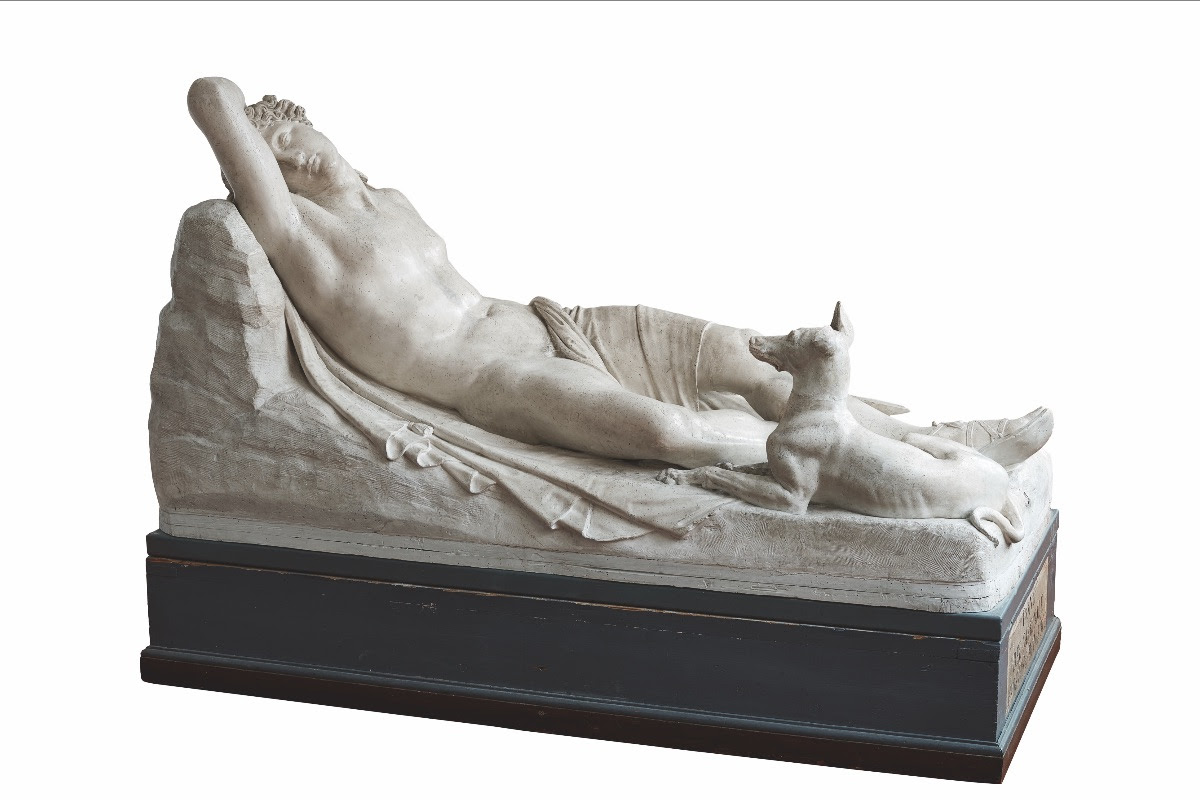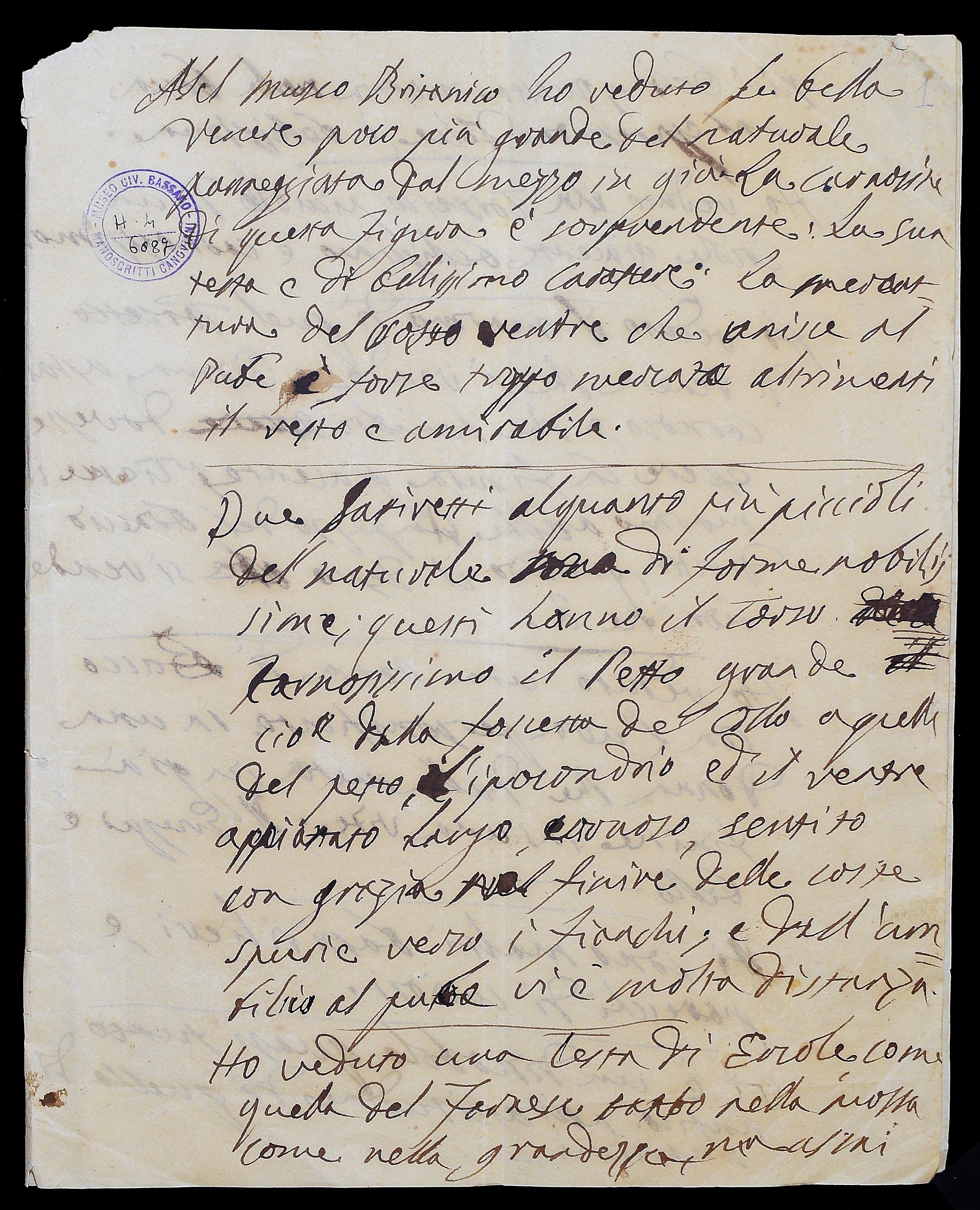The ecstatic gaze, the head leaning back, a tear streaking her face, the rediscovered Magdalene, considered for two centuries the lost masterpiece of the sculptor, re-emerged from the mists of time as the protagonist of a fable of art that he has seen wandering for a long time in an intricate realm of auctions and collections, he is now preparing to cross the Channel to reach Bassano del Grappa.
The last masterpiece of the genius of Possagno, created shortly before his death for Robert Jenckins, second Earl of Liverpool and British Prime Minister, will be exhibited for the first time in an exhibition after 170 yearsguest of honor of the itinerary “Me, Canova. European genius, expected from 15 October to 26 February at the Civic Museum of Bassano del Grappa.
The exhibition, which marks a crucial moment in the official celebrations for the 200th anniversary of his death, the organizers assure, will go “beyond” Canova’s aesthetic universe, returning an original image of the great sculptor, but also of man, of the collector, of the diplomat and patron of the arts.

Antonio Canova, Sleeping Endymion, 1819-1822, plaster and wooden base. Ravenna, Academy of Fine Arts
A key figure in an era marked by great historical and political upheavals that changed the face of Europe, Canova really taught the world hope in the future by bringing man closer to myth, inspiring, with the delicacy of his kind faces, feelings of harmony and peace.
But the Magdalene lying will not be the only precious presence in this long-awaited journey among the over 140 works, curated by Giuseppe Pavanello and Mario Guderzo, with the scientific direction of Barbara Guidi, organized by the Civic Museums of Bassano del Grappa in collaboration with Villaggio Globale International, the patronage and contribution of the “National Committee for the celebrations of the bicentenary of the death of Antonio Canova”.
An evocative story will combine the rich artistic and documentary heritage of Canova present in Bassano with masterpieces such as the marble of Princess Leopoldina Esterhazy Liechtensteinthe large plaster of the Religion of the Vatican Museums, the grandiose Mars and Venus from the Gypsotheca of Possagno, and again theSleeping endymion from the Academy of Fine Arts of Ravenna or the Dancer with her finger to her chin of the Pinacoteca Agnelli, just to name a few.

Antonio Canova, Notes on the journey to England, around 1815, Bassano del Grappa, Civic Library
These will be joined by the works that will allow us to reconstruct the context in which Canova lived, from Portrait of Senator Abbondio Rezzonico by Batoni, to works such as the Deposition by Paolo Veronese, Luck by Guido Reni, works that the sculptor himself brought back to Italy in 1815 thanks to a courageous diplomatic mission.
The route will help the public to reconstruct some important commissions, such as the Damossenus And Creugant, the funerary monument for Horace Nelson and that for Pope Clement XIII, the equestrian monument to Ferdinand IV of Bourbon and that for Napoleon. But he will also tell about the relationships with popes, nobles and patrons, evoking the relationships that Canova had with artists and writers of his time, from Angelika Kauffmann to Anton Raphael Mengs.

Paolo Caliari known as Paolo Veronese, Deposition of Christ, c. 1546-1549, Oil on canvas, 119 x 76 cm, Verona, Castelvecchio Museum
Signed by Studio Antonio Ravalli Architects as part of a larger redevelopment project for the entire Civic Museum of Bassano, the itinerary will unfold in three chapters: The man and the artist, Canova and Europe, Canova in History.
The great absentees on this journey – which promises to be rigorous but compelling, thanks also to the generosity and trust of many museums, institutions and collectors who have lent works of great delicacy, some of which have never been exhibited before in Italy – will instead be some famous marbles, officially on loan from the State Hermitage Museum in St. Petersburg, and then the Peace from the National Museum of Kiev, a splendid allegory in marble, of a shocking topicality. At the outbreak of the Russian-Ukrainian conflict, the renunciation of these loans was inevitable and convinced.
The hope is that the works of Canova, a man and diplomat of peace, may one day meet again from Russia and Ukraine, as a testimony to renewed times of serenity and dialogue.
![]() Read also:
Read also:
• The other face of Canova, the European genius who taught the world about hope

